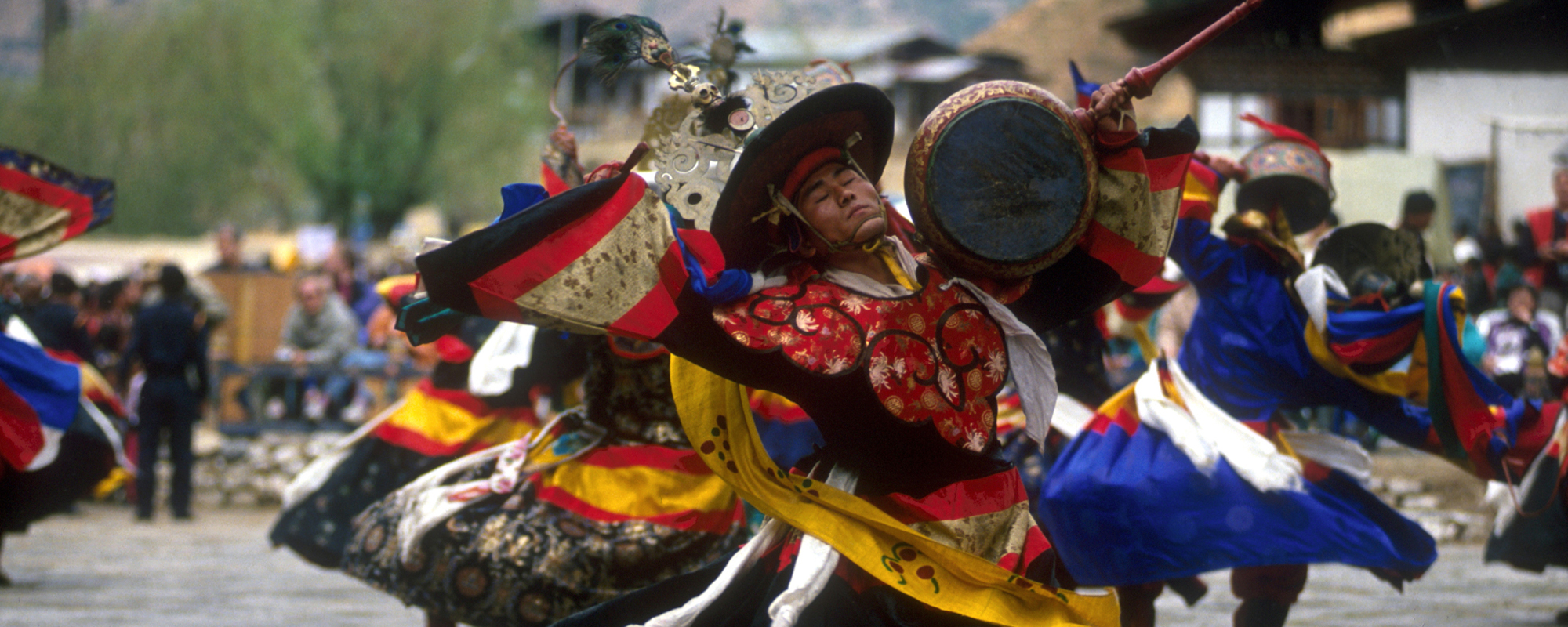
The Noble Traveller
CUSTOM | BHUTAN | JOURNEYS








The western circuit comprises of the six western Districts in the country that includes Thimphu, Paro, Haa, Wangdue Phodrang, Punakha and Gasa. What makes this circuit special is that the Noble Traveller of Bhutan has categorized new ways of exploring the existing great sights.
In this circuit you can attend the summer festival of Haa and delve into the wonders of the ancient living culture of the Haaps (People from Haa). The festival highlights Shamanic rituals and other folk dances. You may also enjoy the beauty of rare Himalayan flowers in bloom or take a daring trek to Nob Tsonapatra, immersing you in the interesting legends of the area.
In Thimphu you can witness the newly introduced Takin Festival, MICE & GNH conferences, meditation and wellness facilities. You can also visit temples, dzongs (fortresses) and museums or attend a textile festival that brings to life the rich culture of Bhutanese weaving.
You’ll marvel at the historical depiction of medieval Bhutanese warriors who defended Bhutan with swords and shields during the Punakha Tsechu/festival. The various festivals are scheduled throughout the year and trips can be tailored in accordance.
Experience the plantation of rice in early summer or the harvests of the same in autumn. The golden hue of ripening rice fields is a photographers’ delight in autumn. Western Bhutan is home to some of the country’s finest museums, and you’ll not want to miss the opportunity to learn about our storied history and traditional culture. Paro museum (Tadzong), displays hundreds of artifacts revealing the history and culture of Bhutan, In Thimphu, let the Folk Heritage museum enthuse you with an in-depth look into a typical farmers’ livelihood.
Taktsang:
Taktsang Lhakhang is Bhutan’s most iconic landmark and religious site. The name Taktsang translates to “The Tiger’s Nest”. This temple is one of the most holy sites in the kingdom and clings impossibly to a sheer cliff face 900 hundred meters above the Paro Valley. It was first built in 1692 at a cave where Guru Rimpoche meditated in the 7th century A.D. Legend states that Guru Rimpoche flew to the site atop the back of a tigress and meditated in the cave for 3 years, 3 months, 3 days and 3 hours in order to subdue evil demons residing within it. The cave has been considered a sacred site ever since and many famous saints have travelled to meditate in it.
Taktsang Lhakhang is located approximately 10 km north of Paro town at an altitude of 3.120 meters. In order to arrive at the temple visitors must trek for around 2-3 hours through beautiful, shady pine forests. No trip to Bhutan would be complete without a visit to this remarkable heritage site.
Punakha Dzong:
Placed strategically at the junction of the Pho Chu and Mo Chu rivers, the dzong was built in 1637 by Zhabdrung Ngawang Namgyal to serve as the religious and administrative seat of the region. It was here that the dual system of government was introduced in the 17th century and in 1907, enthroned the first King Gongsr Ugyen Wangchuck. Damaged over the centuries by four catastrophic fires and an earthquake, the dzong has been fully restored in the recent years by the 4th King Jigme Singye Wangchuck. At the dzong enrich your trip with the opportunity to see the highest standards in woodwork. Do not miss the massive Kuenray, the Coronation Hall of all Bhutanese kings, the Dzongchung at the entrance to the dzong and the cantilever bridge over the Mochu that has been recently renovated.
Khamsum Yuley Temple:
There is no temple in Bhutan built elaborately as this. This fascinating temple was built by the Queen Mother of the 5th King to bring universal peace in this world. The best of the spiritual art works are painted on the inner walls. There are also paintings of Buddhist teachers and tutelary deities of the country. This is a great temple to study the symbolic meanings from frescoes and sculptures.
Chhimi Lhakhang:
The divine madman also known, as Drukpa Kinley is a famous teacher with whom the phallic symbol is associated. Tales told by your guide would have excited you to visit Chhimi Lhakhang. The Divine Madman sits there though a statue this time. Do not miss the master’s deeds painted on the walls. Japanese and several American couples visited this temple and were blessed miraculously with children. Ask yourself, do I need this Fertility Tour or not?
Talo Excursion:
A day excursion to Talo would be great with picnic lunch. The festival there happens in spring and will capture any visitor’s attention. Let your tour take you there in summer during corn harvest. It’s an adventure to enjoy corn harvest with the farmers and also an opportunity to look for Himalayan bear. A walk through Talo and down to the other village of Nobgang will be a great day’s itinerary.
Nalanda Buddhist College:
Locals call this place Dalayna and the monks call it Nalanda Buddhist College. If you want to chat up with monks in English then this is the place to go. The monks here are dying to practise the new language they learn. Drive there in the afternoon and enjoy your evening tea supplemented by the ravishing view in front of you.
Chorten Nigpo walks:
The walk to Chorten Ningpo passes through several villages. Many visitors love this walk in summer and in autumn. In summer the rice fields are lush and gardens are filled with multitudes of vegetables and fruits. Likewise autumn enchants visitors with the golden hue of ripening rice. For adventure loving hard core walkers we recommend a detour to Hokotso, a lowland lake that holds many legends. This is recommended in autumn though.



